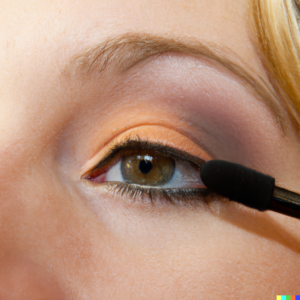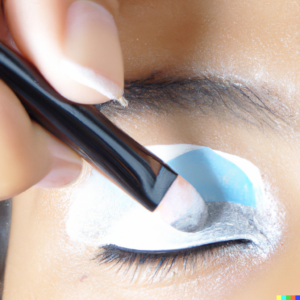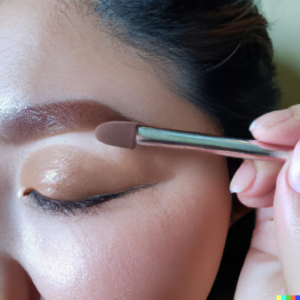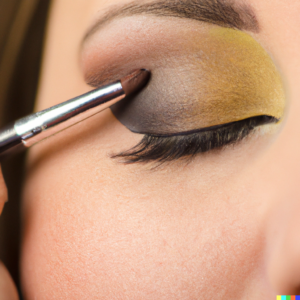All about Eyeshadows.
Applying eyeshadow properly enhances the appearance of the eyes and helps to create a desired look, whether it be natural or dramatic. Proper application helps to create definition, balance, and dimension, and can make the eyes appear brighter, larger, and more youthful. Incorrect application, on the other hand, can result in a messy, uneven, or unnatural look that can detract from one’s overall appearance.
As an Amazon Associate I earn from qualifying purchases.
Eye-catching Eyeshadow: A Guide to Choosing the Perfect Shade, Texture, and Finish
Eyeshadows come in a wide range of colors and textures, and can be applied using a variety of techniques. In this article, we will explore everything you need to know about eyeshadows, including how to choose the right shade, texture, and finish for your skin tone and eye shape.
- Choosing the Right Shade
The first step in choosing an eyeshadow is to consider your skin tone and eye color. Certain shades will complement your natural coloring better than others, and can make your eyes pop. Here are some general guidelines for selecting eyeshadow shades based on your coloring:
-
Fair skin: Soft, pastel shades such as lavender, pink, and baby blue will complement fair skin tones. Avoid dark or intense colors that may look too harsh against pale skin.
-
Medium skin: Warm, earthy shades such as gold, bronze, and rust will complement medium skin tones. Avoid pastels, which may not show up well on your skin.
-
Dark skin: Bold, vibrant shades such as deep blues, purples, and greens will complement dark skin tones. Avoid light or pastel shades that may not show up well on your skin.
-
Eye color: Certain shades can enhance the natural color of your eyes. For example, green shades can make green eyes pop, while purple shades can bring out the green in hazel eyes.
- Choosing the Right Texture
Eyeshadows come in a variety of textures, each with its own benefits and drawbacks. Here are the most common eyeshadow textures:
Powder: Powder eyeshadows are the most common type, and are available in both matte and shimmer finishes. They are easy to apply and blend, and are ideal for creating a wide range of eye looks.
The Urban Decay Naked Reloaded Palette is a popular eyeshadow palette that features 12 neutral shades, ranging from light to dark. The shades have a mix of matte and shimmer finishes, making it versatile for day and night looks.
The Anastasia Beverly Hills Modern Renaissance Palette features 14 warm-toned shades, including matte and shimmer finishes. The shades are highly pigmented, blendable, and can be used to create a range of looks.
Cream: Cream eyeshadows are thicker and more pigmented than powder eyeshadows. They are ideal for creating bold, intense eye looks, but can be more difficult to blend.
Maybelline Color Tattoo Eyeshadow is a long-wearing cream eyeshadow that comes in a range of shades. The formula is smooth, easy to blend, and can be used as a base or worn alone.
Charlotte Tilbury Eyes to Mesmerize Cream Eyeshadow is a highly pigmented, long-wearing cream eyeshadow. It comes in a range of shades and has a metallic finish. The formula is smooth and easy to apply with fingers or a brush.
Liquid eyeshadows are the most pigmented of all, and can be applied with a brush or wand. They dry quickly and are ideal for creating metallic or glittery eye looks.
Stila Glitter & Glow Liquid Eyeshadow is a highly pigmented, glittery liquid eyeshadow. It comes in a range of shades and can be worn alone or layered over other eyeshadows. The formula is easy to apply and dries down quickly.
Huda Beauty Matte & Metal Melted Shadows:
Huda Beauty Matte & Metal Melted Shadows are a duo of liquid eyeshadows, featuring a matte shade and a metallic shade. The formula is long-wearing, blendable, and can be used to create a range of looks.
- Choosing the Right Finish
The finish of an eyeshadow refers to the level of shine or shimmer in the product. Here are the most common eyeshadow finishes:
-
Matte: Matte eyeshadows have no shine or shimmer, and are ideal for creating a natural, understated eye look.
-
Satin: Satin eyeshadows have a subtle sheen, and are ideal for creating a soft, romantic eye look.
-
Shimmer: Shimmer eyeshadows have a metallic finish, and are ideal for creating a bold, glittery eye look.
-
Glitter: Glitter eyeshadows have a high level of sparkle and shine, and are ideal for creating a dramatic, party-ready eye look.
Apply Eyeshadow Like A Pro (for Beginners)
- Start with a clean and primed eyelid. Apply eyeshadow primer if desired to enhance color and longevity.
- Before applying eyeshadow, make sure your eyelid is clean and free of any previous makeup. Apply a thin layer of moisturizer to your eyelid to ensure a smooth, even application. Then apply primer.

- Before applying eyeshadow, make sure your eyelid is clean and free of any previous makeup. Apply a thin layer of moisturizer to your eyelid to ensure a smooth, even application. Then apply primer.
- Choose your eyeshadow colors. For a classic look, use a neutral color on the lid, a darker color in the crease, and a highlight color on the brow bone.
- Select the eyeshadow colors you want to use. If you’re a beginner, it’s best to start with neutral shades like browns, beiges, and taupes. You can gradually add more colors and experiment with different shades as you become more comfortable with application.
- Apply the lightest color (highlight) to the brow bone and inner corner of the eye using a small fluffy brush.

- Apply a base color: Use a fluffy eyeshadow brush to apply a light, neutral shade of eyeshadow all over your lid, from your lash line to your brow bone. This will create a base colorand help the other eyeshadow shades blend more easily.
-
Apply your crease color: Use a smaller, tapered eyeshadow brush to apply a darker shade of eyeshadow to your crease. Blend the color upward and outward to create a gradient effect.
-
Apply your eyelid color: Use a flat eyeshadow brush to apply a medium shade of eyeshadow to your eyelid, right above your lash line. Pat the color onto your lid, rather than swiping it, to ensure a more intense color payoff.
- Blend, blend, blend: Use a clean, fluffy eyeshadow brush to blend all the colors together, focusing on the areas where they meet. This will create a seamless transition between colors.

-
Apply eyeliner and mascara: Once you’ve finished applying your eyeshadow, apply eyeliner to your upper lash line and mascara to your lashes to complete your eye look.

Remember to start with a light hand and build up the color gradually, blending as you go. With a bit of practice and patience, you’ll be able to create beautiful eye looks that make your eyes pop!
Watch the short video above to understand the steps.







